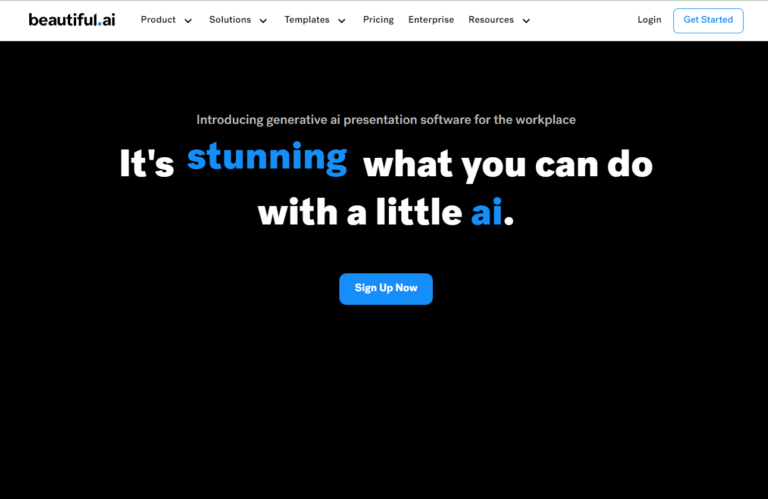
Are you a mobile app developer looking to streamline your cross-platform development process? Look no further! In this article, we will explore some of the best mobile app development tools available for cross-platform development. These tools are designed to help you code once and deploy your app on multiple platforms, saving you time and effort. Whether you are an experienced developer or just starting out, these tools will surely enhance your development experience and make your app creation journey a breeze. So, let’s dive in and discover the top mobile app development tools for cross-platform development!

React Native
Key Features of React Native
React Native is a popular framework for mobile app development, allowing developers to build native mobile apps using JavaScript. This framework offers a range of key features that make it a preferred choice for many developers.
One of the key features of React Native is its ability to offer a native-like experience by rendering components directly to native platform views. This means that the apps built with React Native have the look and feel of native apps, providing a seamless user experience across different platforms.
Another important feature of React Native is its hot-reloading capability. Developers can make changes to the code and instantly see the results without having to rebuild the entire app. This feature greatly speeds up the development process and allows for faster iterations.
React Native also supports a large number of third-party libraries, which can be easily integrated into the app. This extensibility makes it easy to add additional functionality to the app and leverage existing open-source libraries.
Advantages of using React Native
There are several advantages to using React Native for mobile app development.
First and foremost, React Native allows for code reusability across different platforms. Developers can write code once and use it on both iOS and Android platforms, saving time and effort. This significantly reduces development costs and allows for faster time-to-market.
Another advantage of React Native is its performance. By using native components, React Native apps achieve high performance comparable to that of fully native apps. This ensures that the app is responsive and delivers a smooth user experience.
React Native also has a large and active community of developers. This means that developers can easily find support, resources, and community-contributed components to help them in their development process. The community also regularly updates React Native with new features and bug fixes, ensuring that the framework stays up-to-date.
Disadvantages of using React Native
Despite its numerous advantages, React Native also has some disadvantages that developers should consider.
One major disadvantage is its limited access to native APIs. While React Native provides a bridge to native code, there are still some APIs and functionality that may not be available or require additional customization. This may limit the app’s ability to fully utilize the capabilities of the underlying platform.
Another disadvantage is the larger package size of React Native apps compared to fully native apps. This is due to the fact that React Native requires the inclusion of a JavaScript runtime and framework, which can increase the app size. However, efforts are being made to minimize the impact of this issue and improve the performance of React Native apps.
Additionally, the learning curve for React Native can be steep for developers who are unfamiliar with JavaScript or the React framework. It may take some time for developers to become proficient in using React Native and fully leverage its capabilities.
Despite these disadvantages, React Native remains a popular choice for cross-platform mobile app development, thanks to its wide range of features and the strong support of its community.
Flutter
Key Features of Flutter
Flutter is an open-source UI toolkit for building natively compiled applications for mobile, web, and desktop from a single codebase. It offers a variety of key features that make it a powerful tool for developers.
One of the key features of Flutter is its hot-reload functionality, which allows developers to instantly see the changes made to the code without restarting the app or losing its state. This greatly speeds up the development process and enables developers to iterate quickly.
Another important feature of Flutter is its rich set of customizable widgets. Flutter provides a wide range of pre-built widgets that can be easily customized to create a unique and visually stunning user interface. This allows developers to create beautiful and engaging apps with ease.
Flutter also offers a reactive programming model, enabling developers to easily build UIs that react to changes in data. With its built-in reactive framework, developers can build complex UIs with ease, saving time and effort.
Advantages of using Flutter
There are several advantages to using Flutter for cross-platform app development.
First and foremost, Flutter enables developers to build high-performance apps with a native-like experience. By compiling to native code, Flutter eliminates the need for a JavaScript bridge, resulting in faster rendering and improved app performance.
Another advantage of Flutter is its ability to create beautiful and visually appealing user interfaces. With its rich set of customizable widgets and support for custom animations, developers can create stunning UIs that are consistent across different platforms and screen sizes.
Additionally, Flutter offers a single codebase for multiple platforms. Developers can write code once and deploy it on both iOS and Android, reducing development time and cost. This also ensures that the user experience is consistent across different platforms, creating a cohesive brand experience.
Furthermore, Flutter has a growing community of developers that actively contribute to its development. The community provides resources, libraries, and support to help developers in their journey with Flutter. This ensures that the framework stays up-to-date and offers new features and improvements.
Disadvantages of using Flutter
Despite its advantages, Flutter also has some disadvantages that developers should consider.
One major disadvantage is the larger app size of Flutter applications compared to native apps. Flutter apps contain a built-in runtime, which increases the app size. While efforts have been made to reduce the app size, it can still be a concern for apps with limited storage capacity.
Another disadvantage is the lack of maturity of some third-party libraries and packages. As Flutter is a relatively new framework, not all required functionality may be readily available or well-documented. This may require additional effort from the developers to find or create suitable solutions.
Additionally, the learning curve for Flutter can be steep for developers who are new to the framework. Flutter uses Dart as its programming language, which may not be familiar to all developers. It may take some time for developers to become proficient in using Flutter and leverage its full potential.
Despite these disadvantages, Flutter offers a compelling solution for cross-platform app development, enabling developers to create high-performance and visually stunning apps with ease.
Xamarin
Key Features of Xamarin
Xamarin is a popular framework for cross-platform app development that allows developers to build native apps using C#. It offers several key features that make it a powerful tool for developers.
One of the key features of Xamarin is its ability to share a significant amount of code between different platforms. Developers can write the core logic of the app once and reuse it across iOS, Android, and Windows platforms, saving time and effort.
Xamarin also provides access to the full range of native APIs and platform-specific functionality. Developers can leverage the full capabilities of each platform, ensuring that the app is optimized for each platform and fully utilizes native features.
Another important feature of Xamarin is its native user interface development. Xamarin provides a rich set of UI controls and layout options that allow developers to build native user interfaces that are consistent with the operating system’s design guidelines.
Advantages of using Xamarin
There are several advantages to using Xamarin for cross-platform app development.
First and foremost, Xamarin enables developers to build native apps with a single codebase. By sharing code between different platforms, developers can reduce development time and effort, and ensure a consistent user experience across platforms.
Another advantage of Xamarin is its performance. Xamarin apps are compiled into native code, resulting in high-performance apps that are indistinguishable from fully native apps. This ensures that the app is responsive and delivers a smooth user experience.
Additionally, Xamarin provides access to a large and active community of developers. The community offers support, resources, and pre-built components that can be easily integrated into the app. This allows developers to leverage existing solutions and speed up the development process.
Furthermore, Xamarin offers seamless integration with existing development environments and tools. Developers can use popular tools like Visual Studio and leverage their existing knowledge and skills, making it easier to adopt Xamarin in existing development workflows.
Disadvantages of using Xamarin
Despite its advantages, Xamarin also has some disadvantages that developers should consider.
One major disadvantage is the learning curve associated with Xamarin. Developers need to learn C# and the Xamarin framework, which may not be familiar to all developers. This may require additional time and effort to become proficient in Xamarin development.
Another disadvantage is the larger app size of Xamarin applications compared to fully native apps. Xamarin apps require the inclusion of a runtime, which can increase the app size. However, efforts have been made to reduce the app size and improve performance.
Additionally, some platform-specific features may not be easily accessible or require additional customization. While Xamarin provides access to native APIs, there may still be some limitations or additional effort required to implement certain features.
Despite these disadvantages, Xamarin remains a popular choice for cross-platform app development, thanks to its native performance, code sharing capabilities, and extensive community support.
PhoneGap
Key Features of PhoneGap
PhoneGap, now known as Apache Cordova, is a popular open-source framework for building cross-platform mobile apps using web technologies such as HTML, CSS, and JavaScript. It offers several key features that make it a suitable choice for developers.
One of the key features of PhoneGap is its ability to leverage web technologies to build mobile apps. Developers can use their existing knowledge of HTML, CSS, and JavaScript to develop apps, making it accessible to a wide range of developers.
Another important feature of PhoneGap is its hybrid app development approach. PhoneGap apps are essentially web apps wrapped in a native shell, allowing them to run on different platforms. This approach provides the advantage of code reusability while also allowing access to native device features.
PhoneGap also provides a wide range of plugins and extensions that allow developers to access native device features such as camera, GPS, and contacts. These plugins make it easy to incorporate native functionality into the app and provide a native-like experience to the users.
Advantages of using PhoneGap
There are several advantages to using PhoneGap for cross-platform app development.
First and foremost, PhoneGap allows developers to use their existing web development skills to create mobile apps. This reduces the learning curve and allows developers to quickly adapt to building mobile apps.
Another advantage of PhoneGap is its ability to access native device functionality using plugins. Developers can easily add features like camera access, geolocation, and push notifications to their apps without writing native code for each platform.
Additionally, PhoneGap apps have a broader reach as they can be deployed on multiple platforms with a single codebase. This reduces development time and effort and ensures that the app is available to a wider audience.
Furthermore, PhoneGap has a large and active community of developers. The community provides support, resources, and pre-built plugins that can be easily integrated into the app. This enables developers to leverage existing solutions and speed up the development process.
Disadvantages of using PhoneGap
Despite its advantages, PhoneGap also has some disadvantages that developers should consider.
One major disadvantage is the performance of PhoneGap apps compared to fully native apps. PhoneGap apps rely on a WebView to display the content, which can impact performance, especially for complex and interactive apps. However, recent updates have improved the performance of PhoneGap apps.
Another disadvantage is the lack of access to the full range of native APIs and features. While PhoneGap provides plugins to access some native functionality, not all features may be available or well-documented. This may limit the app’s ability to fully utilize the capabilities of the underlying platform.
Additionally, PhoneGap apps may have a larger app size compared to fully native apps. This is due to the inclusion of the WebView and additional resources required for cross-platform compatibility. However, efforts are being made to optimize the app size and improve performance.
Despite these disadvantages, PhoneGap remains a popular choice for cross-platform app development, especially for developers with web development skills, thanks to its ease of use, extensive plugin ecosystem, and broad platform support.

Ionic Framework
Key Features of Ionic Framework
Ionic is a popular framework for building cross-platform mobile apps using web technologies such as HTML, CSS, and JavaScript. It offers several key features that make it a preferred choice for many developers.
One of the key features of the Ionic framework is its wide range of UI components and pre-built templates. Ionic provides a rich set of UI components that can be easily customized to create visually appealing and interactive user interfaces. This allows developers to create beautiful and engaging apps with ease.
Another important feature of Ionic is its integration with Angular, a popular JavaScript framework for building web applications. Ionic leverages Angular’s powerful features and provides additional components and functionality tailored for mobile app development. This enables developers to build robust and scalable apps using familiar tools and workflows.
Ionic also offers a seamless development experience with its live-reload functionality. Developers can make changes to the code and instantly see the results in the app without having to rebuild or restart the app. This greatly speeds up the development process and enables developers to iterate quickly.
Advantages of using Ionic Framework
There are several advantages to using the Ionic framework for cross-platform app development.
First and foremost, Ionic allows developers to leverage their existing web development skills, such as HTML, CSS, and JavaScript, to create mobile apps. This reduces the learning curve and enables developers to quickly transition into mobile app development.
Another advantage of Ionic is its extensive library of UI components and pre-built templates. Ionic provides a wide range of UI components that are optimized for mobile app development, allowing developers to create visually appealing and interactive user interfaces.
Additionally, Ionic offers excellent cross-platform compatibility. Apps built with Ionic can be deployed on multiple platforms, including iOS, Android, and the web, with a single codebase. This reduces development time and effort and ensures a consistent user experience across different platforms.
Furthermore, Ionic has a vibrant and active community of developers. The community provides support, resources, and pre-built plugins that can be easily integrated into the app. This allows developers to leverage existing solutions and speed up the development process.
Disadvantages of using Ionic Framework
Despite its advantages, the Ionic framework also has some disadvantages that developers should consider.
One major disadvantage is the performance of Ionic apps compared to fully native apps. Ionic apps rely on a WebView to display the content, which can impact performance, especially for complex and interactive apps. However, recent updates have improved the performance of Ionic apps.
Another disadvantage is the limited access to native device features and APIs. While Ionic provides plugins to access some native functionality, not all features may be available or well-documented. This may limit the app’s ability to fully utilize the capabilities of the underlying platform.
Additionally, Ionic apps may have a larger app size compared to fully native apps. This is due to the inclusion of the WebView and additional resources required for cross-platform compatibility. However, efforts are being made to optimize the app size and improve performance.
Despite these disadvantages, Ionic remains a popular choice for cross-platform app development, thanks to its ease of use, extensive library of UI components, seamless development experience, and strong community support.
Cordova
Key Features of Cordova
Apache Cordova, commonly known as Cordova, is an open-source framework for building cross-platform mobile apps using web technologies such as HTML, CSS, and JavaScript. It offers several key features that make it a suitable choice for developers.
One of the key features of Cordova is its ability to access native device features and APIs using plugins. Cordova provides a wide range of plugins that allow developers to access native functionality such as camera, GPS, and contacts. This makes it easy to incorporate native features into the app and provide a native-like experience to the users.
Another important feature of Cordova is its wide platform support. Cordova apps can be built for a variety of platforms, including iOS, Android, Windows Phone, and many others. This ensures that the app can reach a wide audience and be deployed on multiple platforms with a single codebase.
Cordova also offers a rapid development workflow with its live-reload functionality. Developers can make changes to the code and instantly see the results in the app without having to rebuild or restart the app. This greatly speeds up the development process and enables developers to iterate quickly.
Advantages of using Cordova
There are several advantages to using Cordova for cross-platform app development.
First and foremost, Cordova allows developers to use their existing web development skills to create mobile apps. This reduces the learning curve and allows developers to quickly adapt to building mobile apps.
Another advantage of Cordova is its ability to access native device functionality using plugins. Developers can easily add features like camera access, geolocation, and push notifications to their apps without writing native code for each platform.
Additionally, Cordova provides a large and active community of developers. The community offers support, resources, and pre-built plugins that can be easily integrated into the app. This enables developers to leverage existing solutions and speed up the development process.
Furthermore, Cordova offers the advantage of cross-platform compatibility. Apps built with Cordova can be deployed on multiple platforms, reducing development time and effort. This ensures that the app is available to a wider audience and provides a consistent user experience across different platforms.
Disadvantages of using Cordova
Despite its advantages, Cordova also has some disadvantages that developers should consider.
One major disadvantage is the performance of Cordova apps compared to fully native apps. Cordova apps rely on a WebView to display the content, which can impact performance, especially for complex and interactive apps. However, recent updates have improved the performance of Cordova apps.
Another disadvantage is the limited access to the full range of native APIs and features. While Cordova provides plugins to access some native functionality, not all features may be available or well-documented. This may limit the app’s ability to fully utilize the capabilities of the underlying platform.
Additionally, Cordova apps may have a larger app size compared to fully native apps. This is due to the inclusion of the WebView and additional resources required for cross-platform compatibility. However, efforts are being made to optimize the app size and improve performance.
Despite these disadvantages, Cordova remains a popular choice for cross-platform app development, thanks to its ease of use, extensive plugin ecosystem, broad platform support, and strong community support.
Appcelerator Titanium
Key Features of Appcelerator Titanium
Appcelerator Titanium is a popular cross-platform app development framework that allows developers to build native apps using JavaScript. It offers several key features that make it a powerful tool for developers.
One of the key features of Appcelerator Titanium is its ability to access native device features and APIs using JavaScript. Developers can leverage the full capabilities of each platform, ensuring that the app is optimized for each platform and fully utilizes native features.
Another important feature of Appcelerator Titanium is its rapid development workflow. The framework provides a visual development environment that allows developers to build apps using a drag-and-drop interface. This greatly speeds up the development process and makes it easy to create prototypes and iterate quickly.
Appcelerator Titanium also offers a wide range of pre-built UI components, allowing developers to create native user interfaces that are consistent with the operating system’s design guidelines. This makes it easy to build visually appealing and engaging apps with ease.
Advantages of using Appcelerator Titanium
There are several advantages to using Appcelerator Titanium for cross-platform app development.
First and foremost, Appcelerator Titanium enables developers to build native apps with a single codebase. By using JavaScript, developers can write code once and deploy it on multiple platforms, reducing development time and effort. This also ensures a consistent user experience across different platforms.
Another advantage of Appcelerator Titanium is its performance. Apps built with Appcelerator Titanium are compiled into native code, resulting in high-performance apps that are indistinguishable from fully native apps. This ensures that the app is responsive and delivers a smooth user experience.
Additionally, Appcelerator Titanium offers a seamless development experience with its visual development environment. Developers can easily create app prototypes and build user interfaces using a drag-and-drop interface, speeding up the development process and reducing the need for manual coding.
Furthermore, Appcelerator Titanium has a large and active community of developers. The community provides support, resources, and pre-built modules that can be easily integrated into the app. This enables developers to leverage existing solutions and speed up the development process.
Disadvantages of using Appcelerator Titanium
Despite its advantages, Appcelerator Titanium also has some disadvantages that developers should consider.
One major disadvantage is the learning curve associated with Appcelerator Titanium. Developers need to learn JavaScript and the Appcelerator Titanium framework, which may not be familiar to all developers. This may require additional time and effort to become proficient in Appcelerator Titanium development.
Another disadvantage is the limited access to the full range of native APIs and features. While Appcelerator Titanium provides access to native functionality using JavaScript, not all features may be available or well-documented. This may limit the app’s ability to fully utilize the capabilities of the underlying platform.
Additionally, Appcelerator Titanium may have a larger app size compared to fully native apps. This is due to the inclusion of a JavaScript runtime and additional resources required for cross-platform compatibility. However, efforts are being made to optimize the app size and improve performance.
Despite these disadvantages, Appcelerator Titanium remains a popular choice for cross-platform app development, thanks to its native performance, code sharing capabilities, seamless development experience, and strong community support.
Adobe PhoneGap Build
Key Features of Adobe PhoneGap Build
Adobe PhoneGap Build is a cloud-based service that allows developers to build cross-platform mobile apps using web technologies such as HTML, CSS, and JavaScript without the need for local development tools. It offers several key features that make it a suitable choice for developers.
One of the key features of Adobe PhoneGap Build is its ease of use. Developers can simply upload their web assets, such as HTML, CSS, and JavaScript files, to the cloud-based service and build the app with a single click. This greatly simplifies the development process and reduces the need for local development tools.
Another important feature of Adobe PhoneGap Build is its extensive library of plugins and extensions. PhoneGap Build provides a wide range of plugins that allow developers to access native device features such as camera, GPS, and contacts. This makes it easy to incorporate native functionality into the app and provide a native-like experience to the users.
PhoneGap Build also offers seamless integration with other Adobe tools and services. Developers can easily integrate PhoneGap Build into their existing Adobe Creative Cloud workflows, allowing for a smooth and efficient app development process.
Advantages of using Adobe PhoneGap Build
There are several advantages to using Adobe PhoneGap Build for cross-platform app development.
First and foremost, Adobe PhoneGap Build allows developers to build mobile apps without the need for local development tools. Developers can simply upload their web assets to the cloud-based service and build the app with a single click, reducing development time and effort.
Another advantage of Adobe PhoneGap Build is its extensive library of plugins. PhoneGap Build provides a wide range of plugins that allow developers to access native functionality such as camera access, geolocation, and push notifications. This makes it easy to incorporate native features into the app and provide a native-like experience to the users.
Additionally, Adobe PhoneGap Build offers seamless integration with other Adobe tools and services. Developers can leverage their existing Adobe Creative Cloud workflows and easily integrate PhoneGap Build into their app development process. This ensures a smooth and efficient development experience.
Furthermore, Adobe PhoneGap Build has a large and active community of developers. The community provides support, resources, and pre-built plugins that can be easily integrated into the app. This enables developers to leverage existing solutions and speed up the development process.
Disadvantages of using Adobe PhoneGap Build
Despite its advantages, Adobe PhoneGap Build also has some disadvantages that developers should consider.
One major disadvantage is the reliance on internet connectivity. Since Adobe PhoneGap Build is a cloud-based service, developers need a stable internet connection to access and use the service. This may not be ideal in certain situations, such as in areas with limited or no internet connectivity.
Another disadvantage is the limited customization options compared to local development tools. Adobe PhoneGap Build provides a simplified development environment that may not offer the same level of flexibility and control as local development tools.
Additionally, the free tier of Adobe PhoneGap Build has some limitations, such as a limited number of app builds per month and limited access to certain features. Developers may need to upgrade to a paid plan to unlock additional features and remove the limitations.
Despite these disadvantages, Adobe PhoneGap Build remains a popular choice for cross-platform app development, thanks to its ease of use, extensive plugin ecosystem, seamless integration with other Adobe tools, and strong community support.
Unity
Key Features of Unity
Unity is a popular cross-platform game development engine that allows developers to build interactive and immersive experiences for multiple platforms. It offers several key features that make it a powerful tool for game developers.
One of the key features of Unity is its visual development environment. Developers can create, edit, and preview their game scenes and assets in real-time, making it easy to iterate and refine the game design. This greatly speeds up the development process and enables developers to create high-quality games with ease.
Another important feature of Unity is its support for multiple platforms. With Unity, developers can build games for various platforms, including iOS, Android, Windows, Mac, and more, with a single codebase. This reduces development time and effort and ensures that the game reaches a wider audience.
Unity also offers a wide range of tools and features for game development, such as a powerful physics engine, animation system, and a vast asset store. These tools and features make it easy to create complex game mechanics, stunning visuals, and immersive audio experiences.
Advantages of using Unity
There are several advantages to using Unity for cross-platform game development.
First and foremost, Unity provides a visual development environment that enables developers to create, edit, and preview their game scenes and assets in real-time. This makes it easy to iterate and refine the game design, resulting in high-quality games with shorter development cycles.
Another advantage of Unity is its extensive platform support. With Unity, developers can build games for multiple platforms with a single codebase, reducing development time and effort. This ensures that the game reaches a wider audience and maximizes its potential reach.
Additionally, Unity offers a wide range of tools and features tailored for game development. These tools and features, such as the physics engine, animation system, and asset store, make it easy to create complex game mechanics, stunning visuals, and immersive audio experiences.
Furthermore, Unity has a large and active community of game developers. The community provides support, resources, and pre-built assets that can be easily integrated into the game. This enables developers to leverage existing solutions and accelerate the development process.
Disadvantages of using Unity
Despite its advantages, Unity also has some disadvantages that developers should consider.
One major disadvantage is the steep learning curve associated with Unity. Unity offers a wide range of tools and features, which may require additional time and effort to learn and master. This may be challenging for new or inexperienced game developers.
Another disadvantage is the larger app size of Unity games compared to games built with lower-level frameworks. Unity games include a runtime and additional resources, which can increase the app size. However, efforts are being made to optimize the app size and improve performance.
Additionally, Unity games may have higher hardware requirements compared to games built with lower-level frameworks. Unity’s feature-rich environment may require more processing power and memory, resulting in higher system requirements for running the game.
Despite these disadvantages, Unity remains a popular choice for cross-platform game development, thanks to its visual development environment, extensive platform support, powerful tools and features, and strong community support.
NativeScript
Key Features of NativeScript
NativeScript is an open-source framework for building native mobile apps using JavaScript or TypeScript. It offers several key features that make it a powerful tool for developers.
One of the key features of NativeScript is its ability to access native APIs and widgets using JavaScript or TypeScript. NativeScript provides a bridge between the app and the native platform, allowing developers to access native device features and create native user interfaces.
Another important feature of NativeScript is its code-sharing capabilities. Developers can write code once and share it between iOS and Android platforms, reducing development time and effort. This ensures a consistent user experience across different platforms and allows for faster time-to-market.
NativeScript also offers a rich set of UI components and themes for building native user interfaces. Developers can easily customize these components to create visually appealing and platform-specific UIs. This makes it easy to create beautiful and engaging apps that are consistent with the platform’s design guidelines.
Advantages of using NativeScript
There are several advantages to using NativeScript for cross-platform app development.
First and foremost, NativeScript allows developers to build native apps with a single codebase. By sharing code between iOS and Android platforms, developers can reduce development time and effort and ensure a consistent user experience across different platforms.
Another advantage of NativeScript is its ability to directly access native APIs and widgets using JavaScript or TypeScript. This ensures that the app can fully utilize the capabilities of the underlying platform and provides a native-like experience to the users.
Additionally, NativeScript offers a rich set of UI components and themes for building native user interfaces. Developers can easily customize these components to create visually appealing and platform-specific UIs. This ensures that the app is consistent with the platform’s design guidelines and provides a seamless user experience.
Furthermore, NativeScript has a growing community of developers that actively contribute to its development. The community provides support, resources, and pre-built plugins that can be easily integrated into the app. This enables developers to leverage existing solutions and speed up the development process.
Disadvantages of using NativeScript
Despite its advantages, NativeScript also has some disadvantages that developers should consider.
One major disadvantage is the learning curve associated with NativeScript. Developers need to learn JavaScript or TypeScript and the NativeScript framework, which may not be familiar to all developers. This may require additional time and effort to become proficient in NativeScript development.
Another disadvantage is the limited availability of third-party libraries and plugins compared to more established frameworks. While NativeScript provides access to native APIs, not all features may be available or well-documented. This may require additional effort from the developers to find or create suitable solutions.
Additionally, NativeScript apps may have a larger app size compared to fully native apps. This is due to the inclusion of the NativeScript runtime and additional resources required for cross-platform compatibility. However, efforts are being made to optimize the app size and improve performance.
Despite these disadvantages, NativeScript offers a compelling solution for cross-platform app development, enabling developers to build native apps with a single codebase and take advantage of native features and functionality.
In conclusion, there are several mobile app development tools available for cross-platform development, each with its own set of features, advantages, and disadvantages. React Native, Flutter, Xamarin, PhoneGap, Ionic Framework, Cordova, Appcelerator Titanium, Adobe PhoneGap Build, Unity, and NativeScript are popular choices for developers looking to build cross-platform apps. Developers should consider their specific needs, skill sets, and project requirements when choosing the most appropriate tool for their development process. Whether it’s code reusability, performance, access to native APIs, customizability, or community support, each tool offers unique benefits and drawbacks. By carefully evaluating these factors and considering the specific project requirements, developers can make an informed decision and build successful cross-platform mobile applications.






